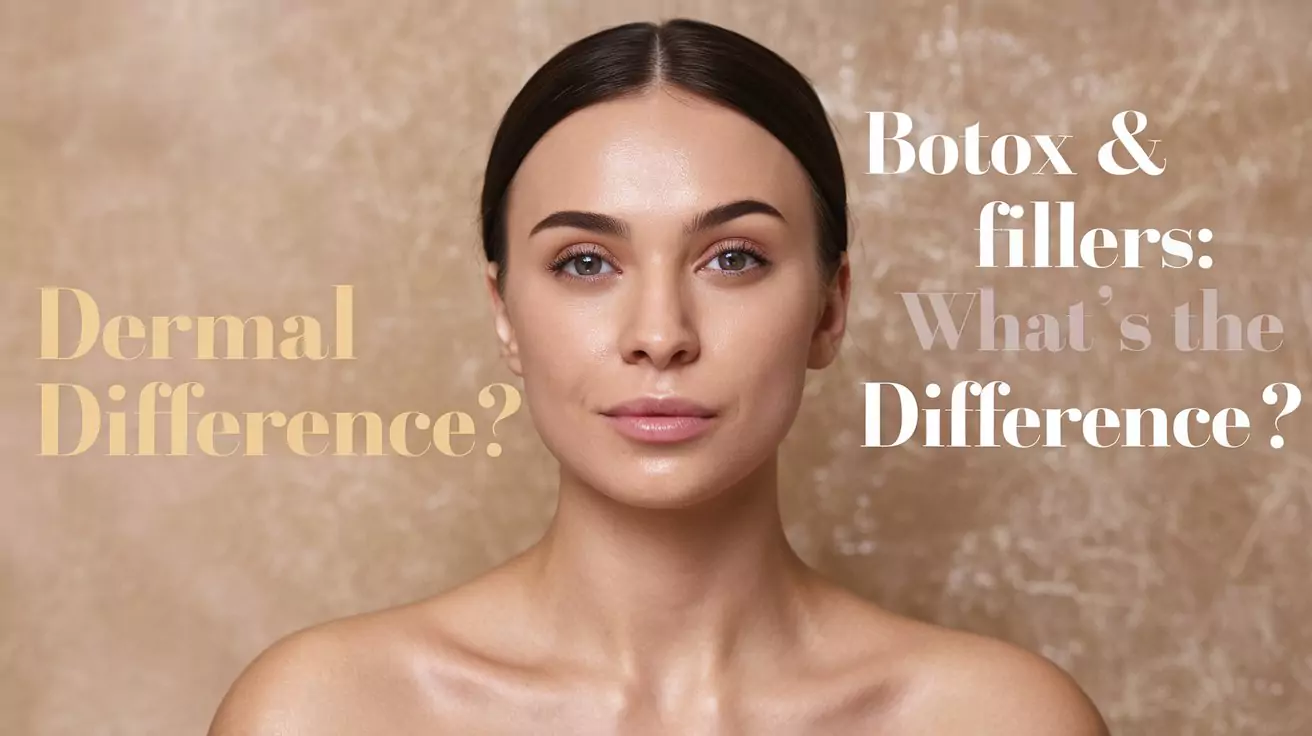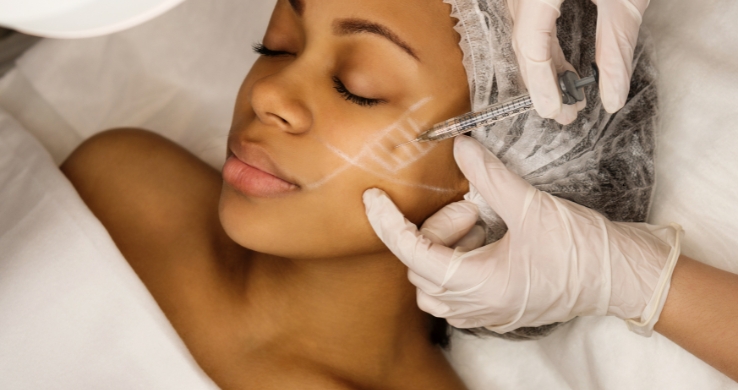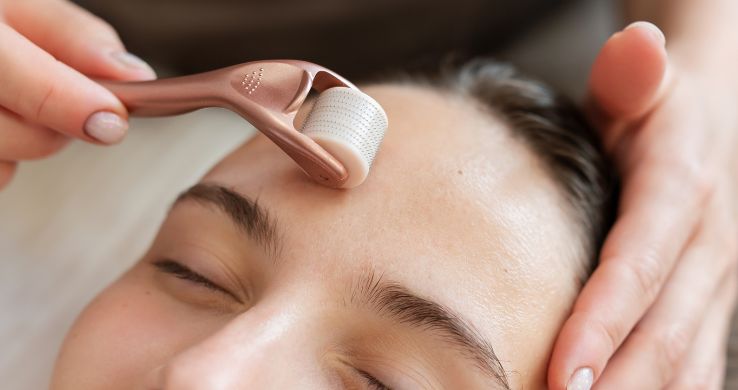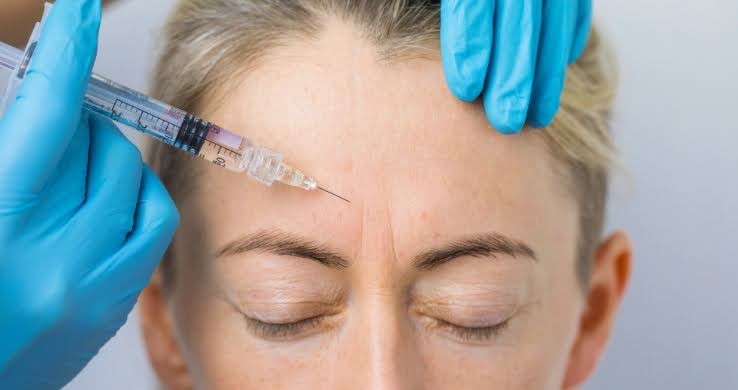Non-surgical treatments have become popular in recent years, but Botox & Dermal Fillers are leading the way. While both procedures aim to tackle signs of aging, they function differently and address distinct concerns. Botox works by temporarily relaxing facial muscles to reduce wrinkles, whereas derma filler restores lost volume, smooths liness, and softens creases or enhances facial contours. Understanding these differences can help people make informed decisions about which treatment is best and suits their needs. In this article, we will explain everything about the what is botox, derma filler, its uses, and which is best.
What is Botox?
Botox is a neurotoxin derived from Clostridium that temporarily paralyzes muscles. This treatment is commonly used to minimize the appearance of wrinkles and fine lines. The way Botox works is by blocking nerve signals to the muscles which results in smoother skin. However, its results are temporary and may last up to six to nine months. Botox is not only used for cosmetic enhancements but also used for numerous medical applications. This procedure takes only a few minutes with minimal discomfort. However, to achieve the best results, consult Effortlessway Aesthetic.
Benefits of Botox
There are many benefits of Botox. Here are some benefits as
Wrinkle Reduction:
Botox smooths dynamic wrinkles like forehead lines, crow’s feet, and frown lines between the brows generated by repetitive facial expressions. However, relaxing underlying muscles prevents deep wrinkles and gives a young look.
Head and Neck Muscles
Chronic migraine relief with Botox is FDA-approved. Blocking nerve impulses and relaxing head and neck muscles reduces migraine frequency and intensity, offering considerable relief.
Hyperhidrosis (Excessive Sweating)
Botox temporarily blocks sweat nerve impulses to treat hyperhidrosis. To reduce perspiration and increase comfort, it is applied to the underarms, palms, feet, and forehead.
Jawline Slimming & TMJ Relief
Botox injections into the masseter muscles may trim the jawline and reduce jaw strain and teeth grinding caused by TMJ condition.
Botox is an effective and less invasive cosmetic and medical therapy.
What Are Dermal Fillers and How Do They Work?
Fillers are used to restore volume, smooth wrinkles, and improve face features. At the same time, Botox targets muscle flexibility and dermal fillers plump up aged regions. Hyaluronic acid, which naturally hydrates the skin, is used in these fillers. Fillers such as calcium hydroxylapatite and poly-L-lactic acid encourage collagen formation for longer-lasting results. Dermal fillers may rejuvenate lips, cheeks, and the jawline. Dermal fillers last six to two years, depending on the kind. Understanding how dermal fillers work helps people pick the correct therapy for natural-looking face improvements.
make them a popular choice for non-invasive facial rejuvenation.
Uses of Dermal Fillers
Lip Enhancement
Dermal fillers are widely used to add volume as well as shape and the lips. They create a fuller, more balanced appearance while maintaining a natural look.
Cheekbone Contouring
Fillers enhance the cheekbones by restoring lost volume in the mid-face, providing a lifted and youthful appearance without surgery.
Jawline
Fillers help sculpt and refine the jawline, reducing sagging and creating a more structured, contoured facial profile.
Wrinkle Reduction
Deep lines such as nasolabial folds and marionette lines can be smoothed out, softening facial creases and giving the skin a refreshed look.
Volume Restoration
Aging causes fat and collagen loss, leading to hollow or sunken areas. Fillers restore lost volume in areas like the temples and under the eyes for a rejuvenated look.
What is the difference Between Botox and Dermal Filler?
Choosing between Botox and dermal fillers for aging and face attractiveness is essential. Mechanisms and concerns addressed by these therapies vary greatly. Understanding their face-area uses is crucial to making an educated choice.
1. Cheeks
Cheek volume loss causes drooping and a less defined face shape as we age. Dermal fillers are the main treatment for these issues. To raise cheekbones, hyaluronic acid or calcium hydroxylapatite fillers are carefully injected. These fillers help shape and define cheekbones to seem younger. Depending on the quantity of filler used, cheek augmentation with dermal fillers costs for each procedure. These effects usually last 6–18 months, depending on the filler. Since Botox relaxes muscles, not volume, it is seldom used in the cheeks.
2. Lip Augmentation/Line Reduction
Aging also thins, loses definition, and forms smoker’s lines on the lips. Dermal fillers, especially hyaluronic acid ones, are most popular for lip augmentation. These fillers define the lip border, increase volume, and smooth lip lines. Small quantities of Botox may relax mouth muscles, softening vertical lip wrinkles. This method is often used with dermal fillers to augment lips. Botox effects last 3–4 months, whereas lip filler effects persist 6–12 months.
3. Forhead: Smoothing Horizontal and Frown Lines
Frown lines—horizontal and vertical lines between the eyebrows—are widespread on the forehead. Botox is the main therapy for these issues. Botox relaxes the muscles that cause these wrinkles, making them smoother. Botox is preferable for reducing dynamic forehead lines created by muscular spasms however, dermal fillers may sometimes alleviate deep forehead wrinkles. Botox for forehead lines lasts 3–4 months.
4. Crow’s Feet: Eye Wrinkles Reduction
Botox mostly treats crow’s feet, the creases around the eyes while smiling or frowning. Botox relaxes the muscles that cause these wrinkles, making the eyes seem younger. Crow’s feet need muscular relaxation, not volume restoration. Hence, dermal fillers are seldom employed. Crow’s feet botox treatments last 3–4 months.
Remember that these principles are a broad framework, and the best course of action depends on your demands and aesthetic objectives. Expert guidance is essential for choosing the best treatment strategy.
Which Is Right for You: Botox or Dermal Fillers?
Choose Botox or dermal fillers based on cosmetics and skin issues. Botox is great for reducing muscle-movement wrinkles, including forehead lines. Dermal fillers are ideal for restoring volume, defining facial features, and smoothing deep wrinkles. Combining treatments to reduce wrinkles and volume loss may provide the greatest results. A professional specialist can examine your requirements and propose the best alternative. Before choosing, consider skin type, age, and desired effect. Botox and dermal fillers are safe and effective when given by a professional. Knowing the advantages of each treatment might help you choose one for a revitalized, young look.
Conclusion
Botox and dermal fillers are the most effective non-surgical cosmetic procedures nowadays. Botox relaxes facial muscles to reduce dynamic wrinkles, while dermal fillers provide volume and shape. Knowing their distinctions and advantages will help you choose a cosmetic treatment. Always consult a specialist for safe, natural outcomes.
FAQs
What are the side effects of derma fillers?
There are no side effects of dermal fillers
Who should avoid filler and botox?
Everyone can take both treatments.
What is a good age to get fillers?
The best age to get fillers is eassly twenties and continue throughout your lifetime.





